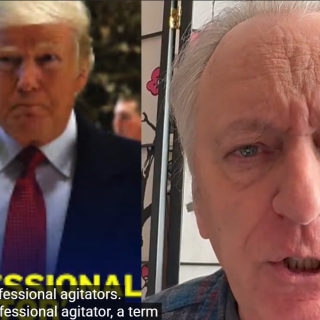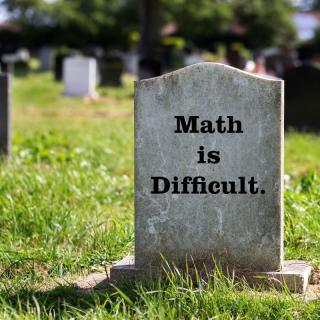A Florida election protection lawsuit filed July 1 could help decide the fall 2020 vote count.
Signed by three Florida Democratic legislators, the suit demands that electronic ballot images be preserved in accordance with federal law. The images are created when computerized scanning devices process paper ballots. Those images can then be counted to give a complete ballot tally within six seconds. The paper ballots are preserved for possible recounts.
By federal law the ballot images are considered part of the public record and, like the actual paper ballots, must be retained at least 22 months. The machines are used in at least 80 percent of the nation's voting stations.
But many Secretary of States and/or State election boards around the country simply erase the images, allowing local officials considerable leeway in determining the vote count. In Florida, which has been notoriously fluid in the accuracy of its outcomes, only 27 out of the 67 counties that we know of are preserving the ballot images.
This suit was filed under the leadership of John Brakey, founder and director of AUDIT Elections USA, a nationwide election protection coalition specializing in digital imaging.
"These records called ballot images will help verify the accuracy of the 2020 presidential election," says State Representative Joseph S. Geller (D-Aventura). Geller is joined in the lawsuit by State Representative Geraldine Thompson (D-Windermere) and State Senator Victor M. Torres (D-Kissimmee) as well as Dan Helm, a candidate for Supervisor of Elections in Pinellas County. Geller said the destruction of these images is clearly in violation of state and federal law.
"Governor DeSantis has just signed a new law that allows digital ballot images to be used in recounts," says Susan Pynchon, Director of Florida Fair Elections Coalition, "and yet there is nothing in the law requiring the ballot images to be preserved for 22 months. This new law adds urgency to the preservation of ballot images as vital election records."
Says Brakey: "Florida been the scene of numerous razor-close elections, including the 2000 presidential election decided by just 537 votes and the 2018 U.S. Senate election decided by only 10,033 votes.
Preservation of voting materials has been a widespread problem. In 2004 the King-Lincoln-Bronzeville civic organization sued the state of Ohio to preserve ballots for audits and a recount. Ohio’s then-Secretary of State Jennifer Brunner ordered all county election boards to bring all ballots and other related materials to a special repository in Columbus. The demand was supported by the federal courts.
But 56 of Ohio’s 88 counties failed to comply, claiming they were missing all or some of the necessary election material needed for a recount. There were no ensuing prosecutions.
Allen County claimed some of its materials got water damage, and then all were destroyed by a contractor. Guernsey County said a trash collector picked up the ballot boxes in error. The Mahoning County Board of Elections blamed environmentalists who "accidentally" picked up ballots when recycling. Hamilton County "accidentally" shredded its ballots. Holmes County took the "dog ate my homework" prize by claiming a carafe of coffee spilled on the ballots as they were stored in a vault.
In Florida, 2018, Broward County "lost" 2,040 ballots. Brakey noted that the voting machine companies themselves have marketed digital voting equipment that creates ballot images that can help in "auditing and adjudication….Had Broward County saved their ballot images in 2018, the mystery of the missing 2,040 ballots could have been solved."
Florida defendants include the Supervisors of Elections in Broward, Miami-Dade, Duval, Orange, Lee, Pinellas, Palm Beach, and Hillsborough Counties, who say they have no legal obligation to save the ballot images, and admit to destroying them.
"The ballot images are a critical component for system diagnostics," said Ray Lutz, an electrical engineer who is one of the nation's top experts on ballot images. "If errors or discrepancies are discovered, the images are needed to pinpoint the source of those errors, whether it's faulty equipment, software bugs, or other external reasons.
"Ballot images can also be a check on the paper ballots," Lutz added. "Paper ballots can be modified with a pen, accidentally destroyed or inappropriately shredded. Having the original image created when the vote is cast protects against modification of the paper ballots."
Ballot images are public records that can easily allow anyone to verify election results. Some places, such as Dane County, WI, and San Francisco, CA, and 15 counties in Florida, provide ballot images with a public records request or post all the ballot images on their websites so that voters can verify election results for themselves.
“Unfortunately, at least one vendor has built a self-destruct mechanism into their voting systems that allows election officials to destroy evidence that is public records that can help determine if election results are accurate,” Brakey said. “Our success in this lawsuit will go a long way towards reducing cynicism about elections. Our country needs elections that are transparent, trackable, and publicly verified.”
Links to Case # 2020 CA 001238:
The Complaint Filing # 109701662 E-Filed 07/01/2020 09:55:22 PM: https://bit.ly/31AByN7
This Complaint with Hyperlinks to all Exhibits: https://bit.ly/31zUQlD
—————
Bob Fitrakis & Harvey Wasserman have co-written seven books on election protection, including The Strip & Flip Disaster of America's Stolen Elections, at freepress.org along with Bob's Fitrakis Files. Harvey's The People's Spiral of US History is at solartopia.org.



